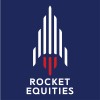

Southeast Asia’s high-growth companies are at the forefront of a rapidly expanding market. Opportunities are abundant but complex, and as these businesses scale and evolve, effective asset management becomes even more important for achieving sustainable growth.
In this article, we’ll explore the different types of asset management for high-growth companies in SEA and how it ensures that companies stay on track as they capitalize on opportunities and continue to grow in an increasingly competitive market.

Strategic asset allocation is the cornerstone of long-term asset management in many SEA companies, which involves determining the optimal mix of assets—such as equities, bonds, real estate, and other financial instruments—based on the company’s goals, risk tolerance, and time horizon.
By setting a long-term asset allocation strategy, businesses can establish a diversified portfolio that balances potential growth with risks. This approach helps companies avoid overexposure to a single asset class, ensuring that their investments are well spread across different sectors and asset types.
Tactical asset allocation is a more dynamic strategy that involves making short-term adjustments to a company’s asset mix based on market conditions or economic trends. Unlike strategic asset allocation—which focuses on long-term stability—this one seeks to capitalize on opportunities or mitigate risks in the short run.
High-growth SEA companies can leverage this approach by taking advantage of market fluctuations, such as interest rate changes, economic shifts, or emerging market trends. By actively monitoring these and more, companies can make informed adjustments and optimize their returns while maintaining a diversified portfolio.
Effective risk management is critical for high-growth companies in Southeast Asia, where market volatility and external factors can significantly influence performance. Beyond avoiding losses, it involves identifying regional challenges such as currency fluctuations, political instability, and economic shifts, and crafting strategies to mitigate these risks while safeguarding long-term business success.
By integrating risk management practices into their overall asset allocation approach, companies can not only protect their portfolios but also improve their long-term performance by identifying opportunities for growth while minimizing exposure to downside risks.
Performance and attribution analysis is crucial for high-growth companies to evaluate how well their investment strategies are performing and what’s driving those results. This process looks at the returns from different assets and helps pinpoint exactly what factors contributed to those returns.
For high-growth companies in Southeast Asia, understanding how each part of the portfolio is performing—whether it’s stocks, bonds, or other investments—can provide valuable insights. For instance, if a company’s portfolio is showing strong growth, attribution helps determine whether that success came from a specific industry or a particular stock, allowing companies to make smarter decisions about where to allocate funds in the future.
Through this type of asset management, companies get to have a better understanding of which sectors or assets are outperforming others, allowing companies to fine-tune their portfolio, and make sure that resources are being used effectively for long-term success.

ESG (Environmental, Social, and Governance) integration has become an essential component of asset management, where sustainability and ethical practices are gaining increasing attention. Its factors provide a more holistic view of a company’s risk and performance by evaluating its impact on the environment, its social responsibility, and the quality of its governance.
For high-growth companies looking to attract responsible investors, integrating ESG considerations into their investment strategy is no longer optional but necessary. It not only helps companies align with global sustainability trends but also demonstrates their commitment to long-term value creation.
Moreover, companies that demonstrate strong governance and social responsibility are more likely to mitigate long-term risks, improve their market reputation, and foster loyalty among investors and customers.
Effective asset management for high-growth companies in SEA is the key to navigating the complexities of the industry as it continues to grow even more every day.
At Rocket Equities, we specialize in guiding high-growth companies in SEA through these critical asset management processes. As your trusted investment adviser, we help you craft strategies that are not only tailored to your company’s unique needs but also aligned with market trends and future opportunities.
Reach out today to learn how we can support your business in achieving its investment goals and scaling new heights.

Rocket Equities Team
2025-04-15 • 7 min

Rocket Equities served as the exclusive financial advisor to the Philippines' leading digital rewards and incentives platform, Giftaway, Inc., in securing a US$ 18M investment from Aura Private Equity and its co-investors.

CREA, a prominent Thai e-commerce player, has been strategically acquired by OnPoint, Vietnam's leading e-commerce enabler, with advisory support from Rocket Equities.
